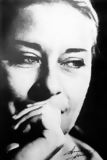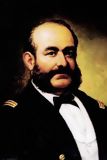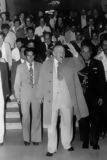
The AIgorythm project

Playwright and actor

Novelist

Writer and poet

Volleyball player

Italian-Peruvian naturalist and geographer

Singer and percussionist

Last Inca emperor

Politician, former prime Minister

Journalist and TV host

Poet

Inca warrior

Actor and comedian

Biophysicist

Poet

Doctor and researcher

Businessman, Interbank group

Journalist and writer

Poet and writer

Singer and songwriter

Writer

Film director, Berlin Golden Bear winner

Football player

Writer and journalist

Doctor and scientist

Photograph

Chess player

Industrialist

Former general

Specialist in public health

Actress and singer

Afro-Peruvian music singer

Mathematician and engineer

Indigenous chronicler

Neurologist and anthropologist

Painter

Football player

National hero, military leader

Intellectual and reformer

Chef and entrepreneur

Fashion designer

Singer-songwriter

TV presenter

Marathon runner

Indigenous Peruvian chronicler

Theologian

Former national team captain

Economist and former health minister

Inca princess

Writer and television host

Folk musician

Poet and guerrilla

Former UN secretary-general

Chef, known for fusion cuisine

Football player

Peruvian aviation pioneer

Poet and artist

Marxist philosopher and writer

Industrialist and businessman

Novelist and ethnologist

Painter and muralist

Opera tenor

Fashion designer

Cardinal of Lima

Peruvian tennis player

Football coach

Leader of the indigenous rebellion

Military hero

Latin singer

War of the Pacific hero

The youngest mother in history

Politician

Creole music singer

Tennis player

Musician

Writer and politician

Politician and founder of the Christian Democratic Party

Founder of Sodalitium Christianae Vitae

Archaeologist and anthropologist

Military leader and politician

Television host

Actress and singer

Contemporary sculptor

Women’s rights activist

Beauty queen

Astrophysicist

Heroine of independence

Mathematician and archaeologist

Historian and anthropologist

Military figure and historical figure

Fashion photographer

Writer, Nobel Prize in Literature, Politician

Revolutionary leader

Environmental activist

Leader of the indigenous rebellion

Musician from Gaia band

War hero

Military leader and politician

Chef, known for Nikkei cuisine

Volleyball coach and former player

Environmental activist

Television personality

Writer

Football player

Epidemiologist and former health Minister

Inventor and aerospace pioneer

Soldier and inventor

Rock singer

Chef and co-owner of Central restaurant

Painter

Football player

TV presenter and actress

Actor

Writer and historian

Journalist and lawyer

Archaeologist, founder of Caral site

Monk and Saint

Saint, patron of Latin America

Physicist and engineer

World champion surfer

Actress

Oncologist

Singer, Latin Grammy winner

Former mayor of Lima

Singer

Actress

Former football player

Painter

Former football player

Painter

Inca leader

Archbishop, saint

Leader of the indigenous rebellion

Revolutionary indigenous leader

Diplomat and intellectual

Sculptor and painter

Political leader, founder of APRA

Lawyer and Former prime minister

Chef of Central restaurant

Former head of secret services

Popular singer

Fashion designer

Exotic music singer
Inés Huaylas Yupanqui (c. 1515-1539) was an Inca princess, daughter of Inca Huayna Capac and one of his concubines. She is known for being one of the prominent figures during the early years of Spanish colonization in Peru. She married the conquistador Francisco Pizarro, and her alliance with the Spaniards became a symbol of the power transition in Peru, from the Inca elite to the new European colonizers.
Inés Huaylas Yupanqui was born into the Inca royal family as the daughter of Inca Huayna Capac, who ruled a vast empire that spanned much of western South America. Her mother was a noblewoman, but due to the polygamous practices of the Incas, Inés was not considered a legitimate daughter but rather a high-ranking concubine. Despite this, her connection to the royal family placed her in an influential position.
After the arrival of the Spaniards in Peru in 1532 and the fall of the Inca Empire, Inés was taken as the wife of Francisco Pizarro, one of the leaders of the conquest. This union took place in a context where alliances between the colonizers and the Inca elite were common, as both parties sought to stabilize their power in the region. Marrying Inés allowed Pizarro to legitimize his control over Inca lands and gain allies among the native nobility.
Inés Huaylas Yupanqui played a key role in the early phase of Spanish settlement in Peru. Although her direct power was limited, as Pizarro's wife, she served as a link between the two worlds: the conquistadors and the Incas. Her children with Pizarro, known as mestizos, symbolized the fusion of Spanish and Inca cultures. Through her marriage, Inés contributed to the creation of a new social order where Inca elites had to adapt to Spanish power.
Inés Huaylas and Francisco Pizarro had two children, Francisco and Francisca Pizarro Yupanqui. Despite the tense political situation and the fall of the Inca Empire, these children, born of two worlds, reached prominent positions in colonial society. Their daughter, Francisca, married Hernando Pizarro, Francisco's half-brother, further consolidating the fusion of the Inca and Spanish dynasties.
The later years of Inés Huaylas Yupanqui's life remain shrouded in mystery. After Francisco Pizarro's death in 1541, her role in Peruvian society diminished. Some accounts suggest she lived quietly in Lima, while others speculate that she may have returned to the Andean region, maintaining some connections with her Inca family.
Inés Huaylas Yupanqui's legacy lies in her role as a bridge between the Inca world and Spanish colonization. Her marriage to Francisco Pizarro and their mestizo offspring symbolized the creation of a new society in Peru, marked by the blending of indigenous and European cultures. Despite the controversies surrounding her figure, Inés is remembered as one of the first female protagonists in Peru's colonial history.
Inés Huaylas Yupanqui represents a key figure in the power transition in Peru, from the fall of the Inca Empire to the establishment of Spanish rule. Her life reflects the complex challenges faced by indigenous elites as they sought to maintain their status and power under the new colonial regime. Through her union with Francisco Pizarro, Inés left a lasting mark on Peruvian history, personifying the cultural and social changes that transformed the country.